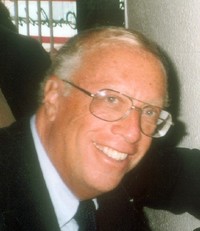By Rabbi Dr. Israel Drazin

BOCA RATON, Florida — Many Christians are convinced that God dictated the New Testament, that it has no errors and no contradiction, and that it contains the true facts concerning Jesus and the beginning of Christianity. In contrast, many scholars in America and Europe for at least several hundred years are certain that the New Testament is the work of humans. They examine the New Testament from a historical critical method. The historian Bart D. Ehrman, the author of Jesus, Interrupted, who knows ancient Greek the language in the earliest known New Testament texts, tells us that one of the reasons he abandoned the prior view, which he passionately held for decades, was that when he compared various ancient Greek volumes of the same New Testament book, he found that no two were identical.
Bart D. Ehrman is a very knowledgeable historian and a very readable and informative writer. He has written many bestselling books. Jesus, Interrupted is another of his excellent books for people interested in knowing about the early years of Christianity. He has shown in his books that Jesus, who he believes actually existed but performed no miracles, was convinced that the world was filled with evil forces and that God would destroy these forces in a short time, during the lifetime of his followers.
Ehrman, like other scholars, also recognized that the books about Jesus and his followers were composed decades after the death of Jesus by people who did not know him and for the most part did not speak Aramaic as Jesus did, had agendas that they wanted or needed to emphasize, and knew little about Judaism, Jesus’ religion. He tells readers that information about Jesus and his followers were not written down during these early decades but were passed from one person and group to another, always with changes that met the needs of the speakers and listeners. These changes included adding imagined legends that magnified the importance of people and events and invented conversations and sayings that reflected the new ideas that Christians had after Jesus’ death, ideas he did not have. These alterations by people who did not know Jesus created the many contradictions recorded in the gospels and the many differences between the stories in the four gospels in the New Testament. The following is a brief example of some of the contradictions mentioned by Dr. Ehrman who explains these and dozens more in detail.
- The Gospels of Mark and John, the first and last Gospels, say nothing about the fundamental teachings of Christianity about a virgin birth of Jesus, the trinity, Jesus being God, and he being born in Bethlehem.
- The stories of Jesus’ birth are only in Matthew and Luke and the two stories are totally different.
- Luke is the only source that states that Joseph and Mary’s hometown was Nazareth. In Matthew, wise men visit the family in their house, their Bethlehem residence, not a visit to a manger, apparently saying Bethlehem was where Joseph and Mary lived, not Nazareth.
- There is a genealogy of Jesus in only Matthew and Luke but the ancestors of Jesus in the two documents are different.
- The voice from heaven that speaks after Jesus’ baptism says different things in Matthew, Mark, and Luke. It does not speak in John.
- After the baptism in the three sources, Jesus says different things.
- The four accounts in the four Gospels give different reasons why Judas betrayed Jesus.
- Who went to Jesus’ tomb after his death is different in the four Gospels.
- There are also differences in what the women saw at his tomb: Mark a man, Luke two men, Matthew an angel.
- Matthew states that Judas’ betrayal of Jesus fulfills a prophecy in Jeremiah that the writer of Matthew quotes, but it is not in Jeremiah, it is in Zechariah.
- According to Mark, Jesus “cleansed the temple” during the last week of his life, but in John, it was at the beginning of his ministry.
- Mark reports that Jesus tells Peter that he will deny him three times “before the cock crows twice,” however Matthew writes it is before the cock crows even once.
- In John, Peter asks Jesus where he was going. Then Thomas asks the same question. But then Jesus remarks, “None of you asked me, ‘where are you going?’”
- According to Mark, Jesus dies on the day of Passover after the group ate the Passover meal together on Passover Eve. In John, the disciples do not eat the Passover meal with Jesus so Jesus says nothing about the bread being his body and the wine being his blood, and Jesus dies before Passover.
- Mark states that Jesus is nailed to a cross at 9 AM. John says, it is in the afternoon.
*
Rabbi Dr. Israel Drazin is a retired brigadier general in the U.S. Army chaplain’s corps and the author of more than 50 books.
In additiion, the concept of virgin birth is based on a mistranslation into Greek of the word ‘Alma ‘ from Isaiah 7, 14 (cited in Matthew 1,23).
But discrepancies are also found in the Old Testament.